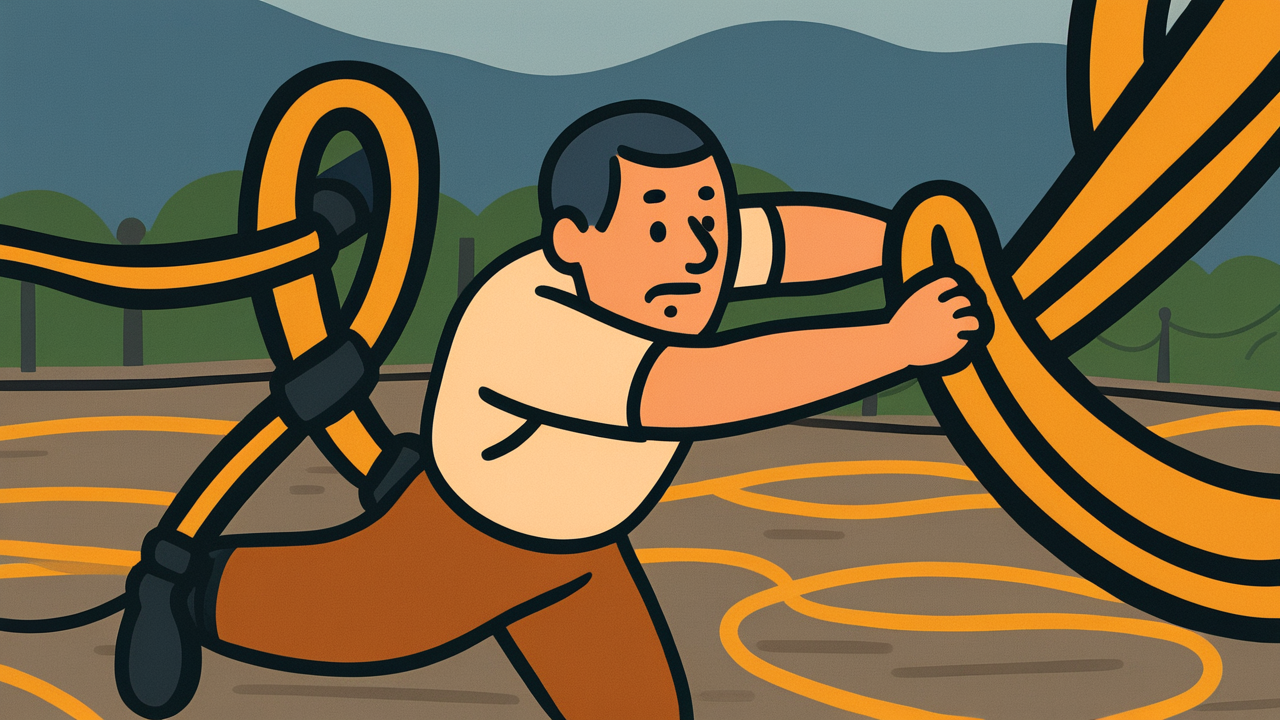How to Read “一筋縄ではいかない”
Hitosuji nawa de wa ikanai
Meaning of “一筋縄ではいかない”
“One strand rope with does not go” is a proverb that describes formidable and complex situations that cannot be resolved through simple methods or straightforward approaches.
This expression is used in situations where things are more difficult than expected and ordinary approaches don’t work as intended. It’s employed when dealing with formidable opponents, when problems are complexly intertwined, or when facing challenges that are unlikely to succeed with a single attempt.
Usage scenarios include when business negotiations are struggling, when trying to persuade stubborn people, or when attempting to solve complex problems. It conveys not just “difficult,” but also nuances of “requiring ingenuity and strategy” and “needing time and dedicated effort.”
Even in modern times, this proverb is used as a way to show respect for opponents or situations while simultaneously expressing enthusiasm for challenges. It’s characteristic in that it acknowledges difficulty while maintaining a positive attitude of seeking alternative approaches rather than giving up.
Origin and Etymology
The origin of “One strand rope with does not go” is thought to lie in the use of rope during the Edo period. At that time, rope was used not just for tying things, but for various purposes. A single straight rope made it difficult to tie up complexly shaped cargo or secure items in unstable locations.
Particularly, merchants and craftsmen used rope daily to transport cargo, but when handling heavy loads or items with complex shapes, they needed techniques to wrap rope multiple times or tie from multiple directions. With just one strand of rope, even a slight impact could cause the load to collapse.
The same was true at Edo period construction sites. When lifting heavy timber or stone materials, a single rope couldn’t withstand the weight and couldn’t respond to wind or swaying. Therefore, it was essential to devise solutions using multiple ropes in combination or using pulleys.
From such practical experiences, it’s presumed that the expression came to be used to mean “cannot be solved with simple methods” and “requires ingenuity and effort.” The practical wisdom of Edo people became established as a proverb.
Usage Examples
- The new project leader is experienced, and I’m prepared that they’ll be someone who is One strand rope with does not go
- This old computer’s malfunction seems to be One strand rope with does not go, so I decided to consult a specialist
Modern Interpretation
In modern society, the expression “One strand rope with does not go” has come to have more complex and diverse meanings. In the information age, problem-solving methods have also diversified, and the quality of “complexity” that this proverb refers to has changed as well.
With technological advancement, even problems that seem easily solvable at first glance actually involve multiple intertwined systems or require consideration of security and privacy, creating new forms of complexity. For example, resolving troubles on social media or communication problems in remote work are uniquely modern challenges that cannot be adequately addressed with traditional face-to-face resolution methods.
Additionally, globalization has made negotiation and cooperation with people from different cultural backgrounds a daily occurrence. There are increasing situations that require understanding not just language barriers, but differences in values and business customs, and approaches tailored accordingly.
On the other hand, there are criticisms that modern people tend to prioritize efficiency and immediate results, leading to decreased patience for “One strand rope with does not go” situations. However, with the utilization of AI and big data, new approaches to complex problems are emerging, and the attitude of “taking ingenuity and time” that this proverb represents can be said to be gaining even more importance in modern times.
When AI Hears This
With a single rope, the direction of force is clear and the necessary tension can be calculated. But when multiple ropes become tangled, force distribution becomes complex and it’s no longer obvious where to pull to untangle them. This is mathematically known as “combinatorial explosion” – as elements increase, possibilities grow exponentially.
The difficulties humans face have exactly the same structure. With a single problem, solutions are relatively straightforward, but the moment multiple factors intertwine, difficulty skyrockets dramatically. For instance, when workplace relationship troubles overlap with family issues, financial anxiety, and health problems, it becomes incredibly hard to determine where to start.
What’s fascinating is the “counterproductive” phenomenon when untangling ropes. Pulling frantically and forcefully actually makes the knots tighter. In human problem-solving too, rushing with heavy-handed approaches often makes situations worse.
Professional rope workers, when faced with tangled rope, first observe the whole picture and carefully begin working from the “loosest” sections. Complex life problems work the same way – by tackling the most manageable small elements first, the entire tangle gradually loosens. Here lies a remarkable alignment between physical laws and human psychology.
Lessons for Today
The proverb “One strand rope with does not go” teaches us who live in modern times how to face difficult situations. Rather than giving up just because results don’t come immediately, it shows the importance of flexibility in trying different approaches.
In modern society, speed and efficiency tend to be emphasized, but truly valuable things require time and dedicated effort. Building human relationships, acquiring skills, gaining trust – all the important elements of life are things that are “One strand rope with does not go.”
What this proverb teaches us is the courage to accept difficulty. When we realize that an opponent or situation is formidable, it gives us the perspective to view it not as a threat, but as an opportunity for self-growth. By layering ingenuity and taking time to work on something, goals that initially seemed impossible can become achievable.
The difficulties you’re facing now might also be “One strand rope with does not go.” But that’s not necessarily a bad thing. That very complexity is a gift that will make you deeper and stronger.



Comments